Explicando os soquetes e conectores RJ45
 Content studio
12/04/2024
Content studio
12/04/2024

Um conector registrado (RJ) é uma interface de rede de telecomunicações padronizada para conectar equipamentos de voz e dados a um serviço fornecido por uma operadora de câmbio local ou de longa distância.
A especificação inclui a construção física, a fiação e a semântica do sinal. Dessa forma, as tomadas registradas são nomeadas principalmente pelas letras RJ, seguidas de dois dígitos que expressam o tipo. Sufixos de letras adicionais indicam variações menores. Por exemplo, RJ11 é a interface mais comumente usada para conexões telefônicas para serviço de uma linha.
Os conectores RJ são uma família de conectores push-and-click para fiação de par trançado em fiação telefônica e de rede. RJ significa Registered Jack (conector registrado). Os tipos de RJ definem um conector do tipo jack ou receptáculo (fêmea) e um tipo de plugue (macho).

RJ 11/12 connector: A 4-wire or 6-wire telephone-type connector that connects telephones to wall plates. RJ 11 supports up to 4 wires, and RJ 12 6 wires but usually only four are used with the two-pair twisted-pair cabling commonly found in telephone cabling.
For the use of RJ connectors in telephone installations connected from a PBX, the telephone pair is wired to the central terminals of the connector, as in the example:
RJ-45 connector: An 8-wire telephone-type connector used with twisted-pair cabling for connecting computers, wall plates, patch panels, and other networking components. RJ-45 is the standard type of connector for both unshielded twisted-pair (UTP) and shielded twisted-pair (STP) cabling in star-topology Ethernet networks such as 10BaseT and 100BaseT4. RJ-45 is defined in International Organization for Standardization (ISO) standard.
Wiring conventions for RJ 45 connectors
The connection of the 4-pair twisted cable on the RJ connector is carried out respecting the "color code" of the cables connected differently according to the standard

The pairs, all or only part of which can be used, are wired independently of the type of RJ connector used (type 110, AMP Barrel, AT&T or with terminal block).
For the most historic used network types, the connector conventions are as follows:

Means of information transmission
For the transmission of data and wired telephony information, copper conductors are most frequently used, which are to be assembled to RJ connectors.
But it should be noted that each conductor in a copper pair is able to act as an antenna, radiating a part of the signal it carries.
By twisting two conductors (a pair) it is possible to cancel the radiations, avoiding interferences to the environment, this is what is known as twisted pair, which is a standard for voice, data and image cabling.
As we are talking about UTP or STP cabling ,it is very important to refer the definitions and differences between the several type of cables used with the RJ45 sockets for VDI purposes:
At the same time it is necessary to know the classification and types of twisted pair cables to better understand why different types of RJ 45 connectors are needed.
What is UTP (U/UTP) wire?
UTP stands for unshielded twisted pair. It is the most common and basic type of twisted pair cable. UTP cable contains twisted pairs that help to decrease and prevent electromagnetic interference. Since UTP cable is unshielded, it offers many advantages, such as lower cost, easy installation and maintenance. Therefore, they are a popular choice for small and medium-sized networks.
What is STP (U/FTP) wire?
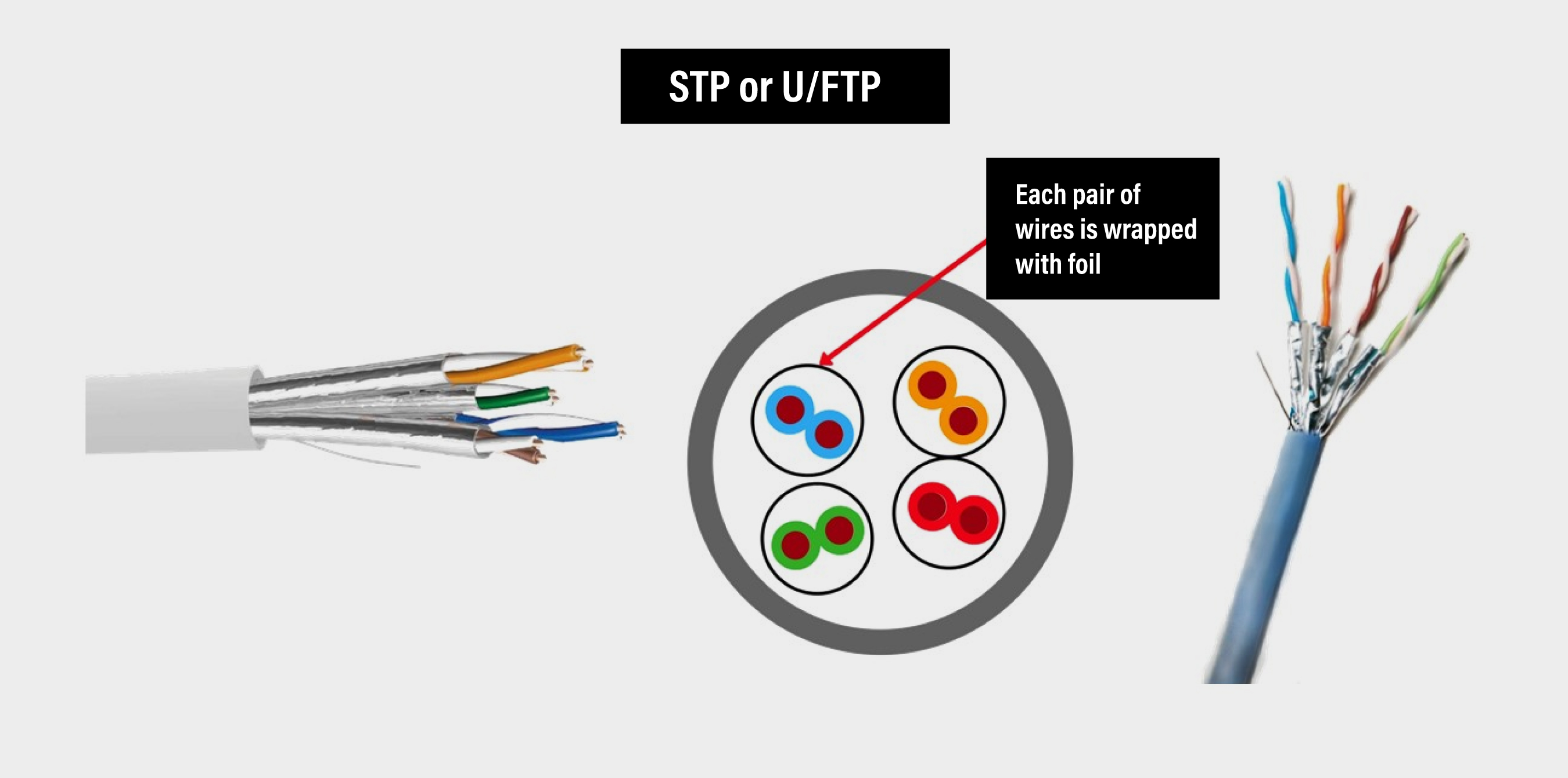
STP stands for shielded twisted pair. Unlike UTP cables, STP cables are covered with a shielding or shielding material consisting of a foil wrap or copper braid sheath.
Unlike UTP, STP requires the use of a ground wire. Shielded twisted pair (STP) requires much more maintenance than unshielded twisted pair (UTP) and is therefore more expensive.
STP metal shielding provides greater protection against electromagnetic interference. More importantly, it offers better performance in crosstalk-intensive applications. This is why STP cable is widely used in high-bandwidth networks, such as radio stations and airports.
Although it has the above advantages, STP cable also has disadvantages, such as higher complexity in installation and maintenance and higher cost.
What is FTP (F/UTP) wire?
Acronym for "Foiled Twisted Pair" or shielded twisted pair cable. In this case we have a cable whose twisted pairs are separated from each other by a basic system based on plastic or non-conductive material. In this case, the shielding is not individual, but global, which surrounds the whole group of twisted pairs, and is made of aluminum.
It does not have as good performance as STP cables, but it does improve on UTP cables in terms of distance and insulation.
What is S/FTP (SSTP) wire?
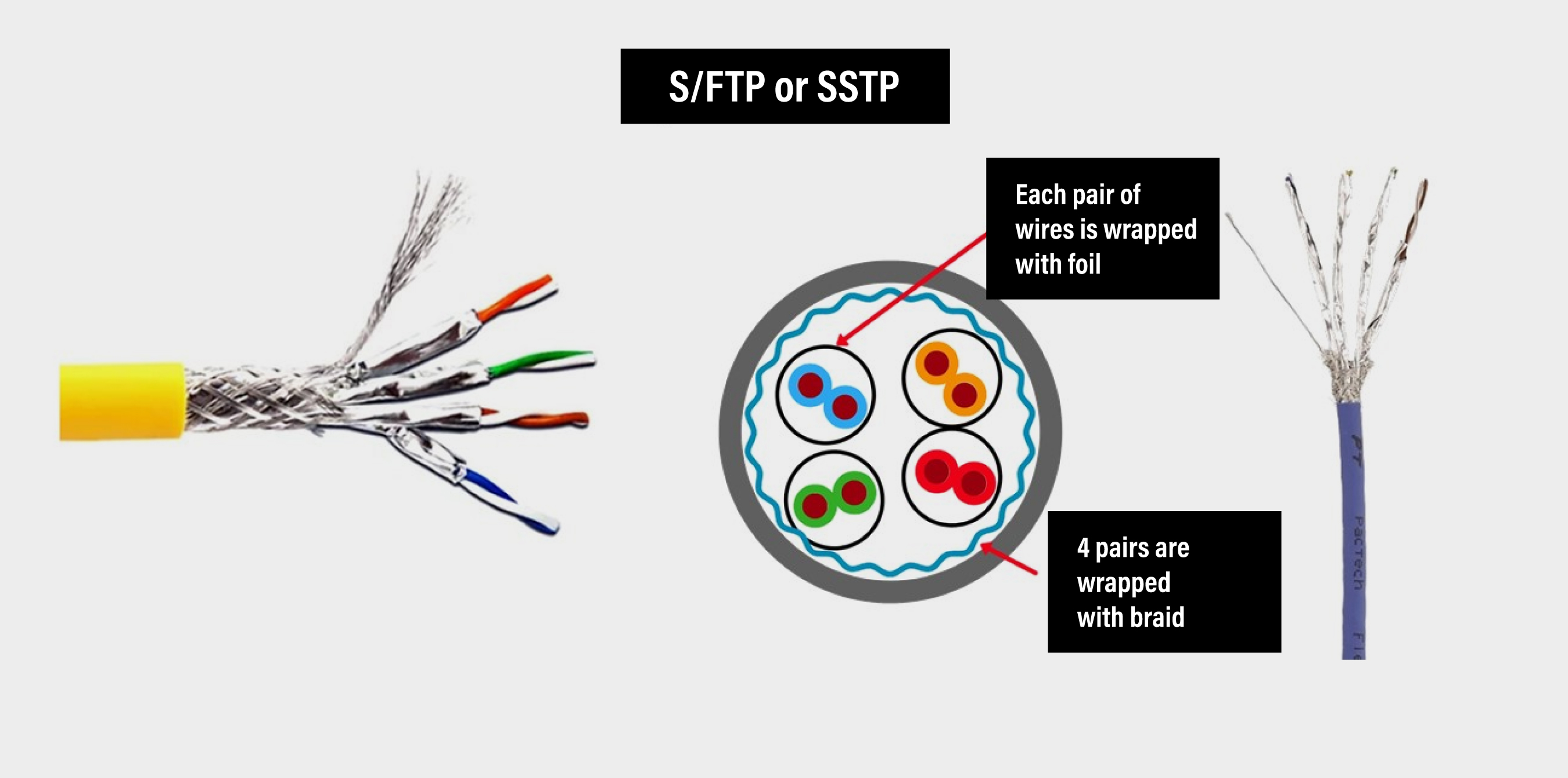
S/FTP stands for shielded foil twisted pair. It is a double shielded twisted pair cable, with an additional layer of twisted mesh over the STP. It is often used as a braided aluminum-magnesium wire mesh. However, it is also used as tinned tcopper wire, which makes it resistant to interference and very confidential for professional cabling projects.
What is SFTP(SF/UTP) wire?
"Screened Foiled Twisted Pair" or individually shielded laminated cable. This cable is based on the construction of the FTP cable, but in the overall shielding a LSZH metal mesh has been added around it to increase the insulation of this cable. Like the previous one, this foil will be connected to the ground in the devices that have it.
These improve the performance of an FTP cable, although they are still inferior to SSTP cables.
We can resume in this table the actual and former nomenclature to define the different types of wires , as normally both of the names are still used:
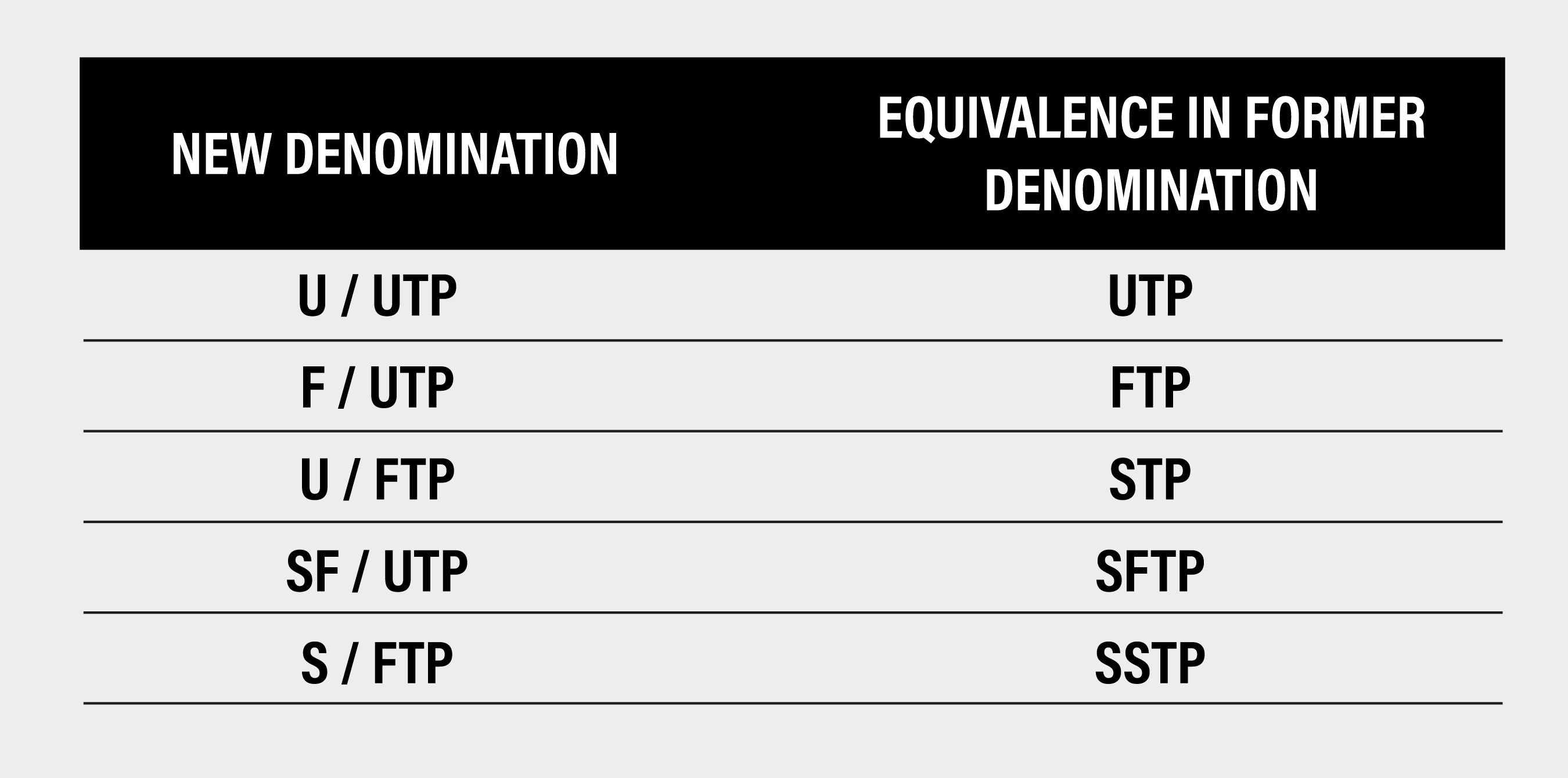
RJ45 & Ethernet
RJ45 and Ethernet are two closely related terms. Developed by the IEEE in the 1980s, the Ethernet standard (IEEE 802.3) defines the rules for configuring Ethernet networks (links), the number of conductors required for connection, the expected performance, and the framework for data transmission.
Ease of use, cost, speed, and support for a wide range of network protocols have made the RJ45 connector a standard device for building networks and remains the most widely used and popular LAN technology in the world.
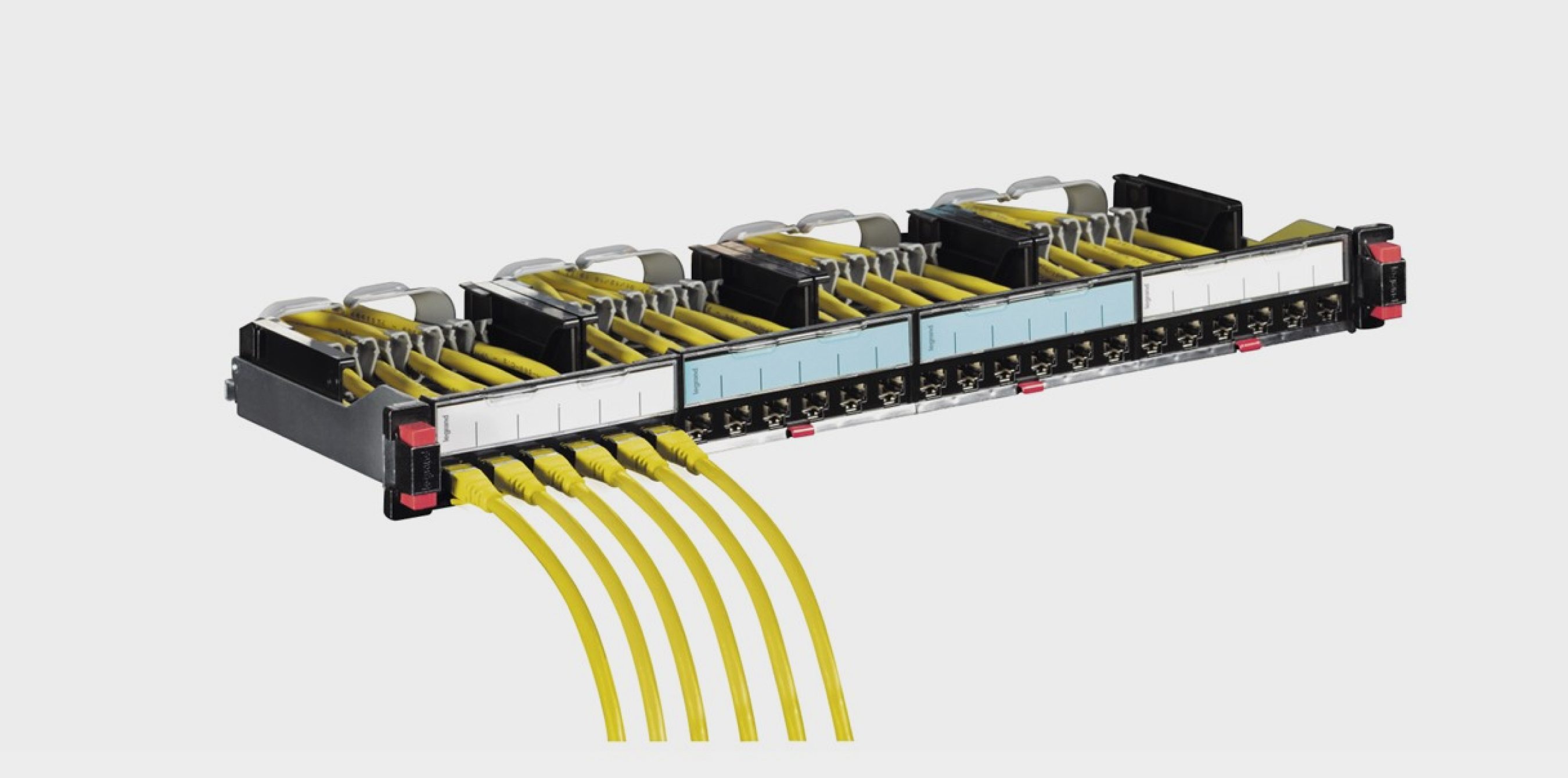
Introduced in 2003, Ethernet for Control Automation Technology (EtherCAT) is a highly versatile networking protocol used by the industry for real-time factory automation, testing and measurement, and more. It is defined by IEC 61158 and operates at high speed with high efficiency. The EtherCAT network uses two RJ45 ports with no other special hardware required. One RJ45 is connected to the previous node in the network and the other is connected to the next node, allowing efficient use of bandwidth.
The table provided below will assist you in determining the most suitable cable type for your specific requirements.
Data transmisión speed according to network category
- Category 1: is used for telephone communications and is not suitable for data transmission as its speeds do not reach 512 kbit/s.
- Category 2: can transmit data at speeds of up to 4 Mbit/s.
- Category 3: used in 10BaseT networks and can transmit data at speeds of up to 10 Mbit/s.
- Category 4: used in Token Ring networks and can transmit data at rates up to 16 Mbit/s.
- Category 5: can transmit data at speeds of up to 100 Mbit/s.
- Category 5E: can transmit data at speeds up to 1000 Mbit/s.
- Category 6: High-speed networks up to 1 Gbit/s.
- Category 6A: High-speed networks up to 10 Gbit/s.
- Category 7: High-speed networks up to 10 Gbit/s and frequencies up to 600 MHz.
- Category 7A: High-speed networks up to 10 Gbit/s and frequencies up to 1000 MHz.
- Category 8: High-speed networks up to 40 Gbit/s and frequencies up to 2000 MHz.
Understanding RJ45 connector Color Code
As we told some lines above yhe color code used for wiring RJ45 connectors is essential for ensuring proper connectivity. There are two common standards: T568A and T568B.
T568A Wiring Standard:The T568A color code uses the following order: green-stripe, green, orange-stripe, blue, blue-stripe, orange, brown-stripe, brown.
T568B Wiring Standard: The T568B color code uses the following order: orange-stripe, orange, green-stripe, blue, blue-stripe, green, brown-stripe, brown.
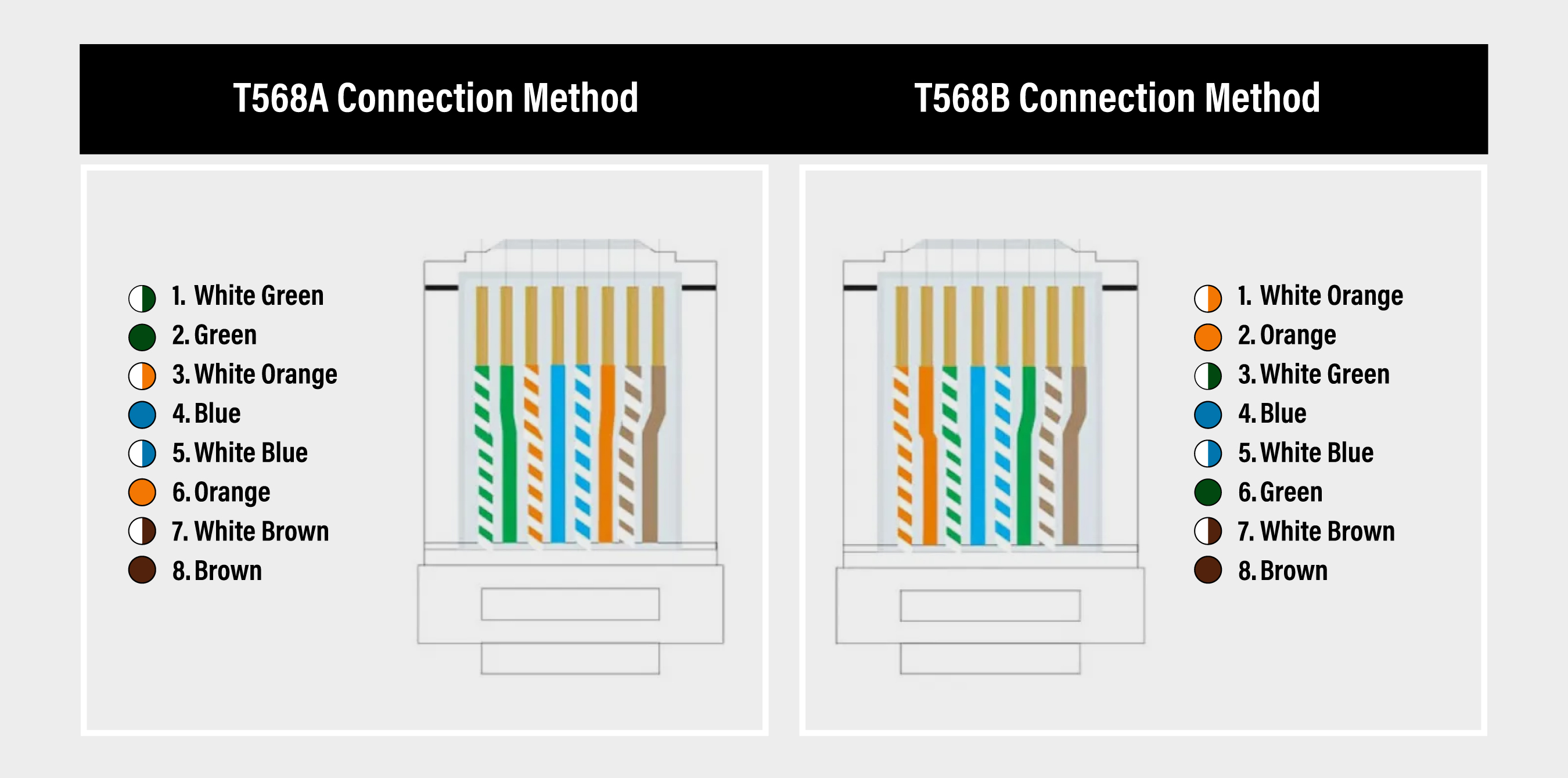
A crossover cable, used to connect two similar devices directly, uses a combination of T568A and T568B on each end.
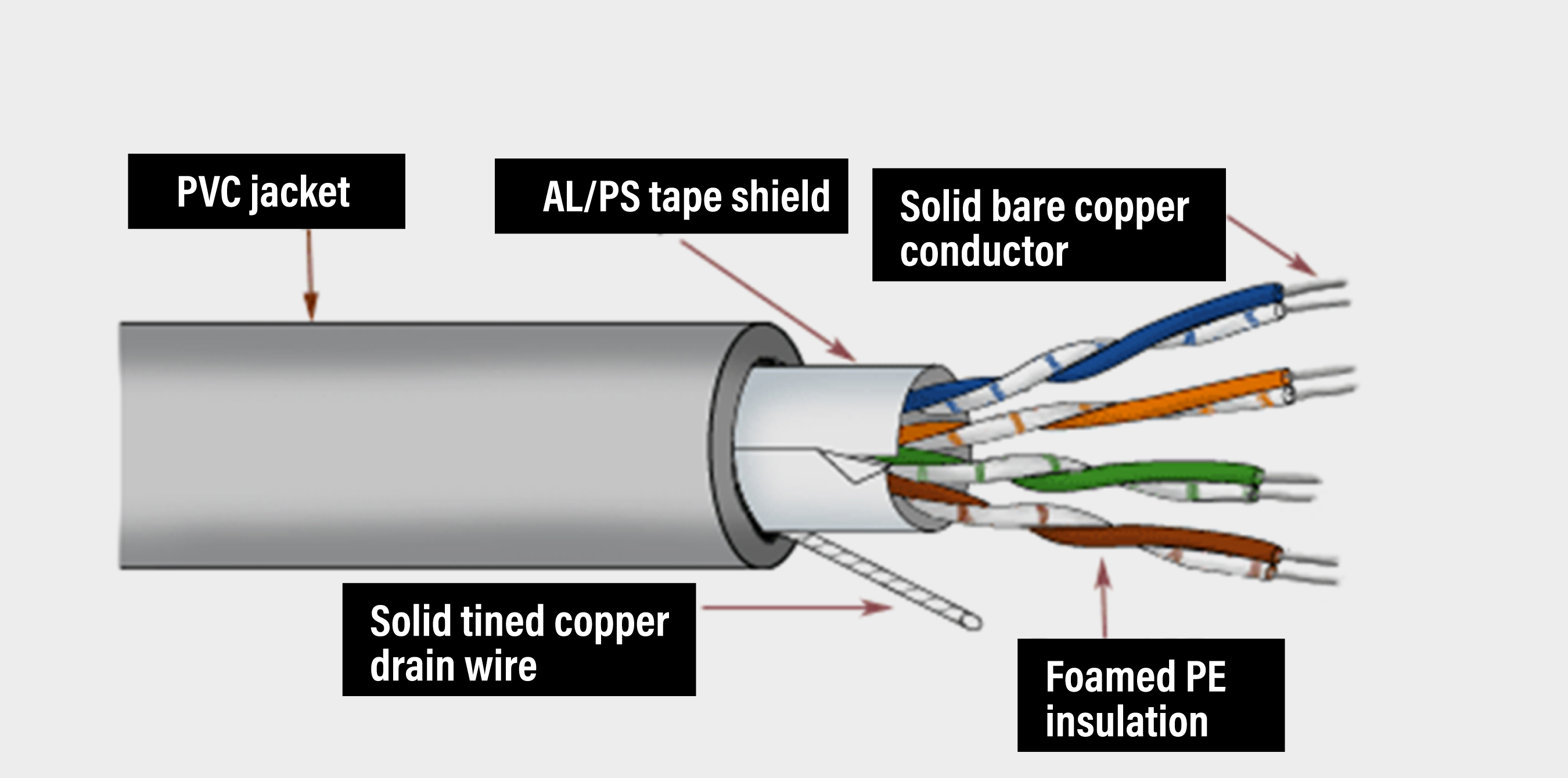
Legrand Group .A main actor in the evolution of RJ45 sockets and jacks
In order to build a structured cabling network, standardized design and installation methodologies must be applied to facilitate and optimize network management time. Different brands of the Legrand Group have been at the forefront of developing solutions to simplify the work of the IT designer and/or installer.
For many years, Legrand has been recommending recognized criteria and proposing innovative solutions in VDI products.
Legrand LCS3 RJ 45 connectors
The traditional crimping procedure using impact tools for conecting RJ45 jacks to the correspondant cable is now almost an old fashioned work as the development of the tooless connectors in the Legrand LCS3 range of products
Tooless quick connect jacks are available in all categories for installation in both panels and workstations. A perfect connection is obtained in a few seconds, ensuring optimum performance of the connection between the panel and the workstation.
They are color-coded to safely identify the category:
- Cat. 5E: gray
- Cat. 6: blue
- Cat. 6 A: yellow
- Cat. 8: turquoise
 So we can show the steps for this toolless conection procedure:
So we can show the steps for this toolless conection procedure:

The tooless Cat. 8 STP connectors, with bit rates from 25 Gbps to 40 Gbps, they are a key part of LCS3 system performance.
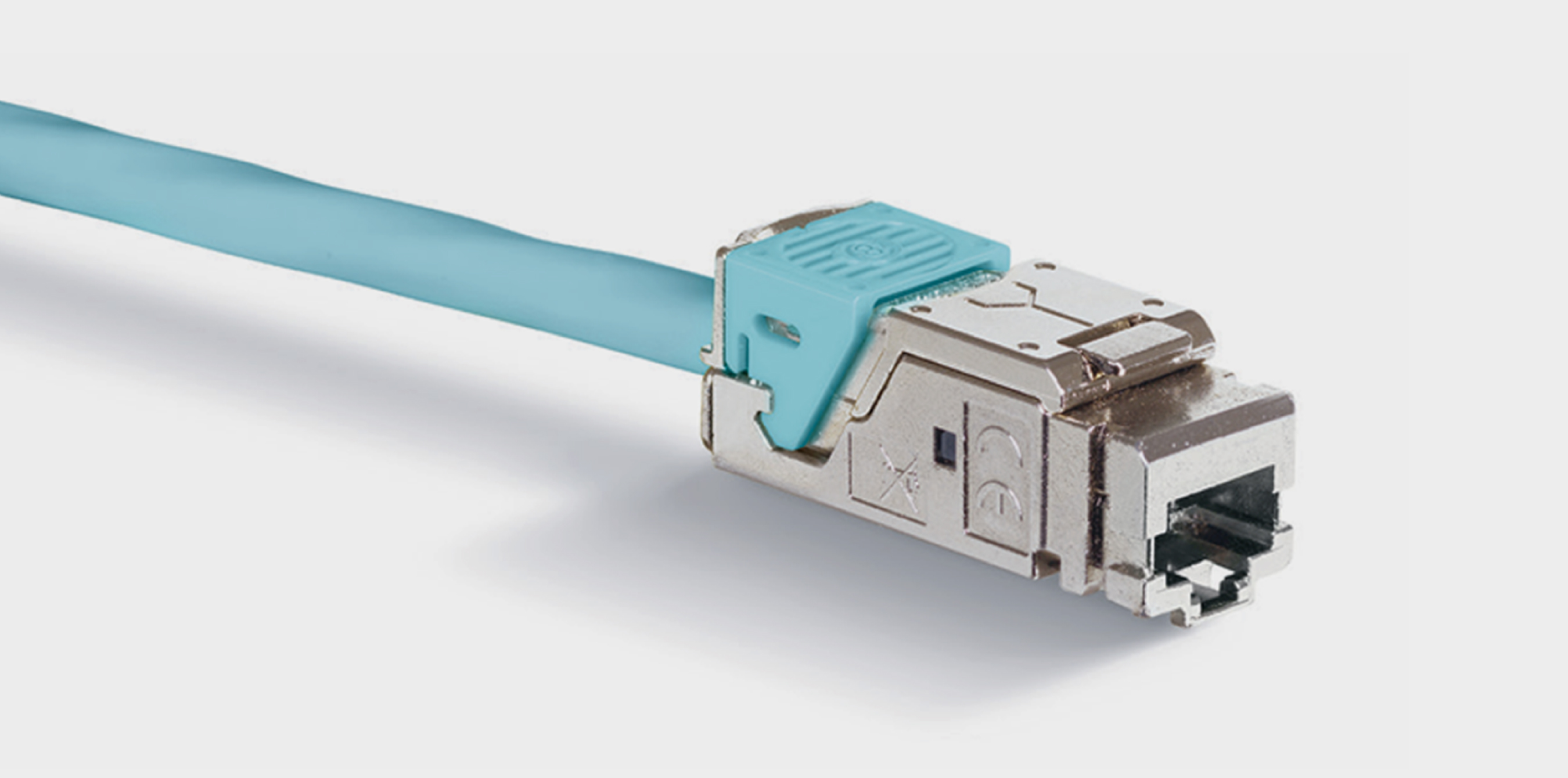
- ISO/IEC 11801 - Edition 3 compliant.
- Tested up to 2500 connection/disconnection cycles
- A perfect connection in a matter of seconds
All LCS3 connectors are PoE+ certified and PoE++ ready
Power over Ethernet (PoE) is a technology that adds power to a standard LAN infrastructure. It allows power to be supplied to a network device (switch, access point, router, phone or IP camera, etc.) using the same cable that is used for the network connection. Eliminates the need for power outlets at the powered device locations and allows for easier application of uninterruptible power supplies (UPS) to ensure 24/7 operation.
Using PoE technology, devices such as Wi-Fi access points, cameras, etc. can be powered via the Ethernet data cable.
The cable combines data and power supply to power PoE peripherals. Depending on the power available, there are three levels of PoE:
- IEEE 802.3af -2003 compliant PoE.
- PoE+ in compliance with IEEE 802.3at -2007-14
- PoE++ IEEE 802.3bt-compliant PoE++ -2018
Legrand also offers sockets with RJ45 connector for quick connection without tools.
Accepts AWG 22 to AWG 26 single-core and AWG 26 multi-core cables. Contact identification by double color coding and 568 A and 568 B wiring.
Conforms to ISO/IEC 11801 edition 3.0 (2017) and EIA/TIA 568 C2-1 standards

The RJ45 sockets with safety locking to prevent accidental disconnection of the connector are particularly noteworthy:
In addition, the availability of color-coded socket covers allows easy identification of the different network functions:
Finally ,with all the accesories in the Legrand LCS3 range the possibilities of installation of the RJ45 outlets and jacks become endless .
The panels in different options increase the modularity for design VDI cabinets in the most valuable technology and fiability.
But this will be a main theme of next articles.